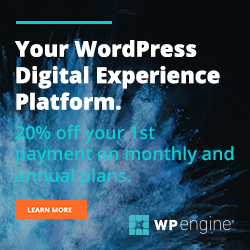I think you will I agree when I say: Starting a blog is one of the best feelings you’ll ever have. The best part comes when people start reading your articles, commenting and sharing. Take it from me, it is one of the best feelings on this earth, something akin to falling in love.
But this adrenaline rush can lead you to make a boatload of mistakes as you start. And to help you avoid the common pitfalls that plague bloggers left, right and center, we bring you 12 of the best tips you will need before starting a blog.
Without further ado, let us weigh anchor and sail.
Top 12 Tips You Need Before Starting a Blog
In this section, we cover a lot of points from content to costs, hosting, security, marketing, and social media among others. By the end of the post, you will be well poised to start a blog like a boss. As usual, we welcome your tips, thoughts, and suggestions in the comment section at the end.
Oh, by the way, these tips are a combo of research and my own past experiences with blogging. I encourage you to read all the way to the end. That being said, let’s get down to business.
Content is King
You’ve probably heard “Content is King” a million and one times before, but that’s only because it is true. Great content is the lifeblood of all successful blogs you see on the web. But what is great content?
Long before you pen down your first post, you should know your target audience. Write relevant and highly valuable content for only this group of people. But how? Find the top 10 results in Google for your topic, then create content that beats what the top 10 websites have.
Remember quality outweighs quantity; there is no use of writing 100 mediocre articles. For instance, Brian Dean (who happens to be a popular blogger) publishes only one article per month but his blog gets a lot of traffic, shares, and comments because – quality content.
Your content is the fuel your blog needs; it is how you will build a brand. As such, you need to pay close attention to the quality of the content you create. To learn more, blogger extraordinaire Neil Patel has a great guide on the nine ingredients of great content.
In a nutshell, strive to:
- Create original content
- Focus on creating strong headlines
- Provide answers via your content
- Make your content actionable
- Be accurate when sourcing and reporting information
- Provoke emotion and thought through your content
- Add images, videos, charts, infographics etc
For more tips, Darren Rowse of Problogger has a mega post on how to create great blog content.
Consistency is Key
When starting a blog, you might be tempted to start writing away without a content strategy. I know this firsthand because that’s how I started – without a plan. The result? I couldn’t keep up with my publishing schedule.
I published articles erratically as if some nasty monster was running after me; now and then like I was scared I would break something. Then life happened and I couldn’t sustain a posting routine. Did you know what happened?
My traffic numbers fell like a lead weight throw water. I couldn’t even get the email list to grow big fast enough. It was a mess, but I didn’t know any better. The point is, stick to a consistent posting plan. Once per month is great, but only you know what kind of schedule would work for your specific situation.
Build an Email List Early
Yes, I know email marketing sounds challenging; something that should be left to the big boys with high volumes of traffic. Nothing could be further from the truth. As a matter of fact, email can be your source of return traffic – the kind of traffic that usually ends up converting.
Did you know that 70% of visitors that come to your site never come back? Building an email list is one of the best ways of capturing people who would have never returned to your site. To learn more about keeping visitors on your site, be sure to check out Over 75% Of Your Blogs Visitors Will Never Return: Here’s What To Do About It by Adam Connell.
Building an email list is easy as pie. Just sign up with an email marketing provider such as MailChimp, AWeber, and SendInBlue among others. Most of these email marketing providers offer free plans for beginners, meaning you can start building an email list without spending a dime.
Be Social
After creating your WordPress blog, you need to follow that up with some social media accounts. Personally, I use Facebook and Twitter predominantly but feel free to choose a social media network of your liking.
But don’t stop after creating the social media accounts for your blog. Nope, you can’t possibly think your social page is all about sharing links when you publish articles. A social media page is the ideal place to build a community, create brand awareness, connect with thought leaders and just be awesome.
For this reason, engage in meaningful conversations with your followers; don’t just bombard them with link after link. When I started a Facebook page for my main blog, I used to post motivational images to get my visitors through the week and guess what? Engagement grew on the page, which translated to more traffic for my blog.
Guest Blog
Between you and me, I don’t remember the last time I wrote a post for my blogs. And no, you won’t catch me slacking; we are active over here 🙂 But can you guess why I barely write for my blogs nowadays? Come on, give it your best shot.
You’re right! I discovered guest blogging is a great way of driving traffic and now I don’t see the need for creating content on my own website. In fact, my blog is just a portfolio now. Nowadays, I write my best content on other websites and let the author bio link bring back visitors.
This strategy works like magic because I can reach wider audiences instead of suffocating my blog with content people will most probably not find. Plus I get to create backlinks on autopilot, which is great for SEO.
N/B: I am not advocating that you leave your blog to grow stale. That’s not the point entirely. Since I write mostly for my clients, I hardly ever get time to write for my blog anymore. When I started though, I wrote a lot of content on my blog but lost most of it when I was hacked.
So, write for your blog, but guest blog more. That’s the point.
Use SEO to Drive More Traffic
Short for search engine optimization, SEO is the process of jazzing up your content so that it can appear on the first page of Google. It is a combination of keyword research, adding metadata, alt tags and so much more.
And contrary to what most “gurus” will have you believe, SEO is easy. I know this because I have easily ranked a number of articles on the first page of Google. Not to gloat or anything, but I have clinched the number one spot a couple of times too.
If you don’t know the first thing about search engine optimization, I am happy to point you to Google’s SEO Guidelines. Follow this starter guide to the letter and you’re golden; you will hack SEO like the pros.
On top of that, you can use a WordPress SEO plugin such as Yoast SEO to optimize your content in amazing ways, and without breaking a sweat.
Starting a Blog Costs Money
Indulge me for a moment, I have a story to tell. This one time not long ago, I got a reseller account as a reward from one of my web hosting clients. Well, I didn’t know what to do with the damn thing, so I decided to help a couple of people launch WordPress blogs for a small fee.
Long story short, I had a difficult time explaining to prospects why I was charging for WordPress. I tried to explain I wasn’t charging for WordPress but hosting and I things got worse. So I was labeled a con artist and I figured the biz was too much trouble. They wanted fully-fledged WordPress websites for free because – WordPress is free. It’s ridiculous!
Back to you, I would like you to know that starting a blog (and running it) costs money. Before you even have a blog, you must buy a domain name and a hosting account. Unless, of course, you’re looking to create free WordPress.com blogs. This flavor comes at no cost, but you’re severely limited in terms of design freedom and functionality.
Starting and running a self-hosted blog will cost you money, and the much you spend depends on your goals and, of course, your budget. Neil Patel reports that he once spent over $20,000 bucks to run his blog for one month. Looks like an outlandish claim, right? Well, I read somewhere it takes money to make money.
Don’t Leave Design Behind
If it is your first time starting a blog, you might forget about the design entirely in favor of content. Well, starting a blog with an amazing design ensures your readers can consume your content without any problems.
For instance, how good is your navigation? Can your web visitors find content easily? Or do they struggle to browse and find information about your business? Does your website provide a good user experience? Is it even responsive?
A splendid design is beautiful, responsive, simple and ensures your readers can consume and find information without any issues. You can invest in a premium WordPress theme such as Total or create a custom design from scratch. Obviously, buying a theme is cheaper than building a custom bespoke design, but the latter has its perks.
In other words, don’t take your blog’s design for granted if you’re looking to make it successful. Look at all the successful blogs you know, what can you say about their designs? All of them spot professional designs.
Blogging Takes Time
Blogging is fun and all that, but it is also tiresome and not for the faint-hearted. Starting a blog takes less than 10 minutes, but building it until it becomes profitable is an arduous task that takes time.
If you’re looking to make money online quickly, blogging might not be the best bet for you. You’re better off with other online businesses such as dropshipping (well, it has its share of challenges too). Blogging is hard work ladies and gentlemen, and it takes time.
I say this because many are the people who think blogging isn’t hard (or a real job) until you start spending a lot of time alone in front of a computer. Whether it takes 6 months or 2 years to realize results from your blog, just know it will take a substantial amount of time.
Define Your Target Audience & Niche
We mentioned this in passing under the “Content is King” section, but I would love to add a few more words because I feel it is important. And what’s that? You cannot write for the entire world and you cannot be a jack of all trades.
I keep saying that with a WordPress blog, the whole world is your market and this might be ambiguous. Let me clarify. What I mean by the whole world is your market is you can sell to anybody no matter where they are on the globe. This is unlike a physical store that’s confined to a certain location.
Still, you need to know your ideal audience, the people you are trying to help with your content. What are their motivations, interests, location, income level, age group and so on? When you understand your reader, you can write content that tugs at their heartstrings. You can create content that’s truly a king.
Same goes for choosing a niche. I can bet all my money nobody is going to take you seriously if you’re writing about dog food one day, WordPress themes the next, and politics the third day. Choose a niche, and ensure it is profitable. The narrower the niche, the better the results.
Learn Some Code
Thanks to the entrance of content management systems (CMS) such as WordPress among others, you no longer need to learn coding to build a website. Just install the CMS, perch a theme on it and install a couple of plugins. Easy peasy stuff.
But, there is no harm in learning coding languages such as HTML and CSS, since such skills can come in handy when you’re customizing your website. Additionally, such skills will help you stand out from the crowd.
Learning some code is a no-brainer if you’d like to design websites for other people. While WordPress makes it all too easy to build sites, some coding knowledge goes a long way when troubleshooting errors.
Invest in a Great Host
As you start your blogging journey, it is important to invest in a great WordPress host from the word go. Go with a reputable host such as WP Engine or SiteGround. If you choose a poor host, you could be in for some headaches later.
For instance, I was once hacked (happens to everyone), but the support I got from my host back then made everything worse. They couldn’t even restore my websites from their backups because – wait for it – the hacker had messed up the backups too! I lost six websites that fateful day, what a loss. Meh.
A good host ensures you have the best site security, stellar support, adequate backups, and your blog is running perfectly. If you plan to make money from your blog, you definitely want to host it with a reputable host.
Additionally, use a service such as ManageWP to create off-site backups that come quite in handy should the worst happen.
Final Words
Today’s post is simply a tiny list of blogging tips; we understand there are many other tips out there. We don’t claim it is a comprehensive guide on starting a blog, but at least it points you in the right direction.
We would love to hear from you. Do you have any blogging tips you’d like to share with us? If so, please don’t hesitate to share in the comment section below.
What to hear about our latest deals and new posts? Subscribe below 👍



